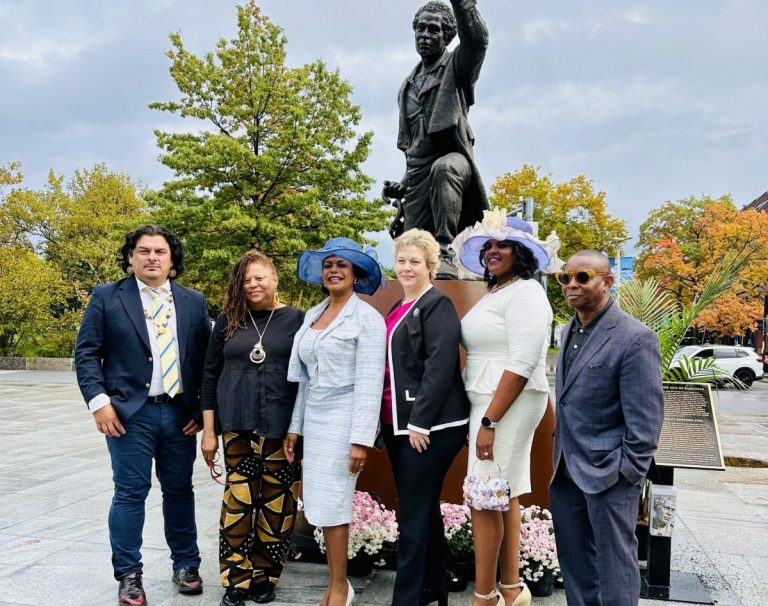Community Leaders Gather To Honor Solomon Northup
Boston, MA — The Commonwealth of Massachusetts, City of Boston, and community partners gathered this week to celebrate the unveiling of Hope Out of Darkness, the first-ever bronze sculpture honoring 19th-century abolitionist Solomon Northup (1807–unknown), author of Twelve Years A Slave. The installation, created by Emmy and Oscar-winning sculptor Wesley Wofford, FNSS, was unveiled before an audience of civic leaders, artists, descendants, and residents at the Boston Harbor Islands Welcome Center on the Rose Kennedy Greenway on Wednesday.
The legacy of Solomon Northup was recognized by Massachusetts Governor Maura T. Healey, who presented a citation honoring the exhibit of the sculpture and reflecting on “Massachusetts’ history of Black and Indigenous slavery and slave trade, as well as the Commonwealth’s leading role in the abolitionist movement.”












